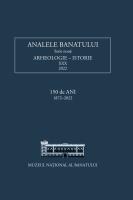Revisiting Caput Bubali – Results of the Topo Survey on the Roman fort in Cornuțel (Caraș-Severin County) .
Revisiting Caput Bubali – Results of the Topo Survey on the Roman fort in Cornuțel (Caraș-Severin County) .
Author(s): Călin Timoc, Michal PiszSubject(s): Archaeology, Local History / Microhistory, Ancient World
Published by: Editura Mega Print SRL
Keywords: roman fort; landscape archaeology; topo survey; non-destructive archaeology; archaeological prospection; woodland archaeology;
Summary/Abstract: This paper reports the non-invasive research on the archaeological site in Cornuţel. The Roman fort, located deep in the woodland, is not visible in the freely accessible remote sensing data, i.e. maps, low-resolution digital surface models, and aerial and satellite imagery. We present here the results of a topo survey in and rendered high-resolution topographical models of the fort. The research was conducted in March 2015, as a part of the “Tibiscum Project” – a Polish-Romanian research project, funded by the Ministry of Science and Higher Education in Poland within the Diamond Grant program . Based on the results of the survey along with the analysis of previous materials, we have established that the earth and timber fort measured 45 x 45 m and it was located in the vicinity of the roman road between villa rustica from Brebu, excavated by Ovidiu Bozu, and the large castellum from Tibiscum-Jupa (the present day Archaeological Reservation).
Journal: Analele Banatului S.N. Arheologie-Istorie
- Issue Year: XXX/2022
- Issue No: 1
- Page Range: 59-69
- Page Count: 11
- Language: English

